Blog
Hiking Alone? Here’s How to Stay Safe and Confident on the Trail
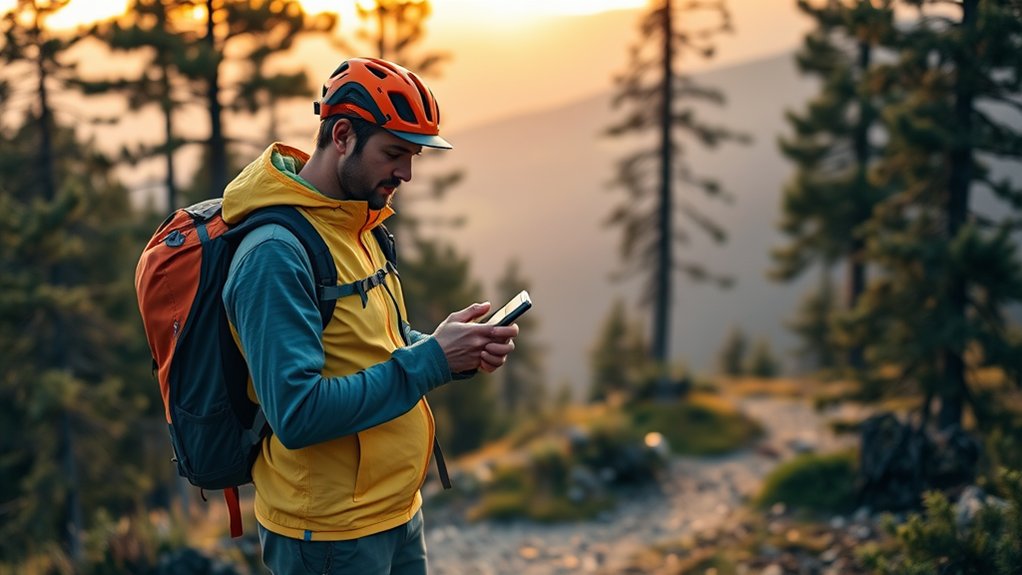
You'll need both physical preparation and mental confidence to hike solo safely. Start by researching your trail thoroughly and sharing your detailed plans with a trusted contact. Pack essential gear including navigation tools, first aid supplies, and emergency shelter. Don't forget to bring plenty of water and appropriate clothing for weather changes. Stay alert to your surroundings, avoid distractions like headphones, and trust your instincts on the trail. Learn basic trail markers and wildlife safety protocols, and always carry reliable communication devices. Master these fundamentals, and you'll discover a whole new world of peaceful solo adventures.
Key Takeaways
- Share your detailed hiking plan, including route and expected return time, with a trusted friend or family member.
- Pack essential safety gear including first aid kit, navigation tools, emergency whistle, and reliable communication device.
- Stay on marked trails, maintain awareness by avoiding headphones, and trust your instincts if something feels wrong.
- Master basic navigation tools like maps and compass before hiking alone, and download offline maps as backup.
- Bring sufficient water, appropriate clothing layers, and emergency shelter while matching trails to your experience level.
Safety Starts Before Your Hike
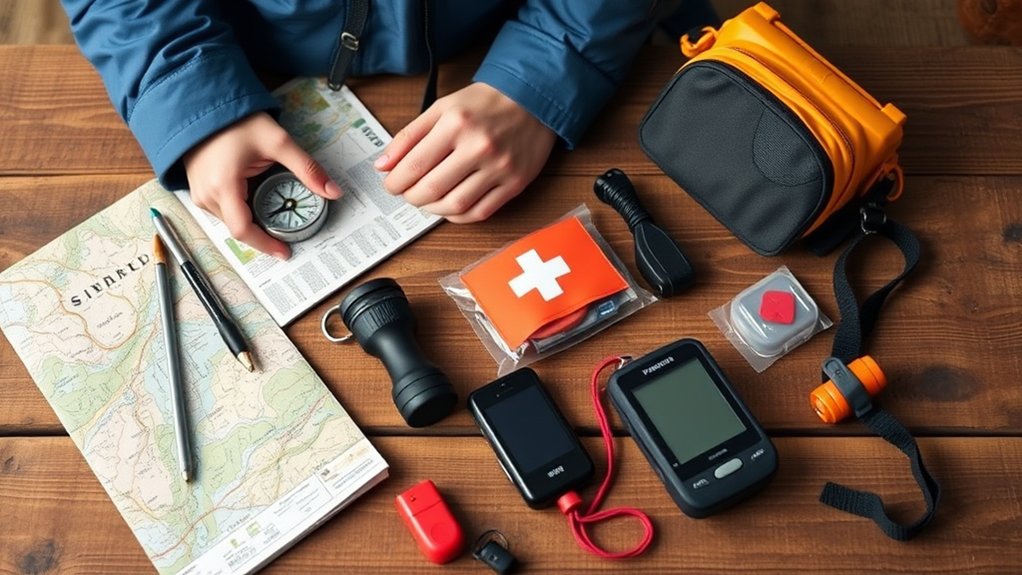
A successful solo hike begins long before you set foot on the trail. You'll need to become intimately familiar with your chosen path by researching its difficulty level, elevation changes, and potential challenges. Having the right safety equipment and gear can mean the difference between a great hike and an emergency situation.
Stay within your comfort zone and aim for a moderate pace of about 2-2.5 kilometers per hour when planning your route.
Bring a complete first aid kit with bandages, antiseptics, and pain relievers for any medical emergencies on the trail.
Pack at least 32 ounces of water before starting your hike to maintain proper hydration throughout your journey.
Use resources like AllTrails to gather thorough trail information and read recent reviews from other hikers who've experienced the terrain firsthand.
Don't keep your adventure to yourself – share your detailed hiking plans with someone you trust. Let them know your exact route, expected return time, and how to reach emergency services if needed.
Consider using tracking devices like AirTags to add an extra layer of safety to your journey.
Study your trail map thoroughly and download an offline version to your phone. You'll want to identify key landmarks, rest areas, and emergency exits before heading out.
Check the weather forecast and current trail conditions, as these factors can substantially impact your hike's difficulty. Make sure to pack appropriate layers of clothing for any sudden weather changes. Most importantly, be honest about your fitness level and choose a trail that matches your abilities.
If you're new to solo hiking, start with paths closer to civilization where help is readily available if needed.
Essential Gear For Solo Adventures
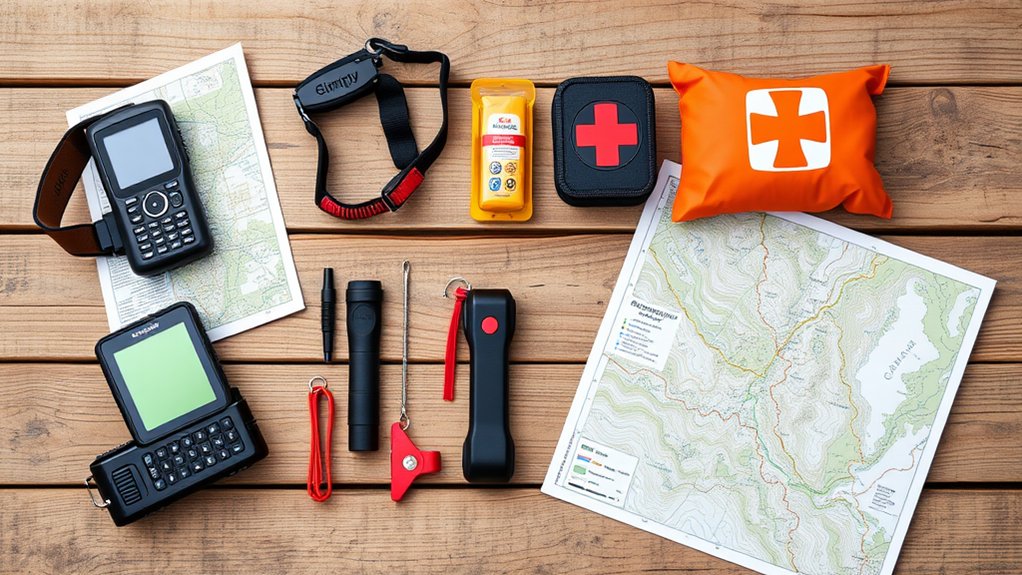
During solo adventures, carrying the right gear can mean the difference between a memorable trek and a dangerous ordeal. Start with reliable navigation tools – a map, compass, and GPS device will keep you on track and help others locate you if needed. Obtaining proper hiking permits before your journey is essential for both safety and legality.
Don't rely solely on your phone; bring a separate GPS device and power bank. Download offline maps from apps like AllTrails or Gaia GPS for backup navigation. Load distribution is critical for comfort, so ensure your pack weight is properly balanced with weight on hips.
Your clothing choices are vital for protection against the elements. Pack quick-dry trekking shirts, sturdy trousers, and a warm padded jacket. Always carry waterproof gear, regardless of the forecast – weather can change rapidly when you're out there alone. In bear country, carry bear spray for protection against wildlife encounters. Remember to stay alert when selecting your trail, especially if you're new to solo hiking.
Safety equipment isn't optional when you're flying solo. Carry an emergency whistle, headlamp, and first-aid kit. Pack an emergency shelter and matches in a waterproof container.
Your survival kit should include a reliable multitool or knife and fire starters.
Stay nourished and hydrated with plenty of water, high-protein snacks, and emergency food supplies. If you're planning an overnight adventure, don't skimp on comfort – bring a quality sleeping pad and camping stove.
Trail Navigation Made Simple
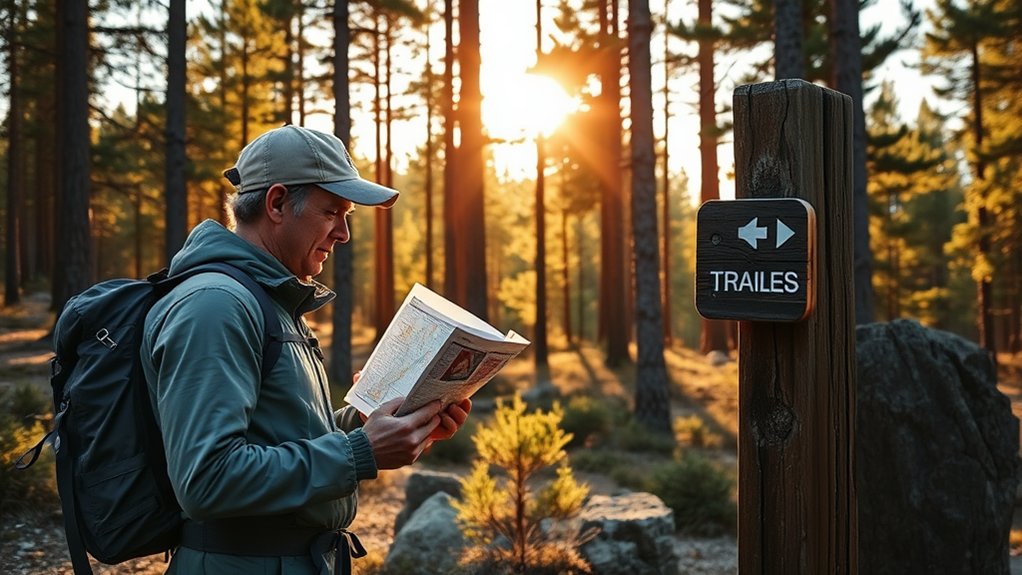
Having the right gear is only half the battle – knowing how to navigate trails effectively keeps you safe and confident during solo hikes. Start by mastering basic trail markers: follow white blazes on the AT, emblems on the PCT, and always watch for cairns in challenging terrain. Double blazes indicate important turns or junctions ahead that require extra attention. Maintain proper declination on your compass to ensure accurate navigation between markers. Regular practice will help make these skills second nature, as navigation skills are highly perishable.
When you spot side trails, note their purpose – they often lead to essential resources like water or campsites. Learning to read terrain features on topographic maps helps prevent disorientation in remote areas. Take photos of trail junctions to help retrace your steps if needed.
Don't rely solely on electronic navigation. Carry physical maps and a compass as backup, even if you're using apps like Gaia or Guthook. Before heading out, share your route and expected return time with someone you trust, and identify potential escape routes to civilization.
Master dead reckoning to track your progress and estimate arrival times. Calculate your hiking rate considering elevation changes and trail conditions, then use the distance = rate × time formula to stay on schedule.
Use natural features as navigation aids – follow ridgelines, streams, or shorelines when possible. Stay alert to your surroundings and check trail markers frequently. If you haven't seen a marker in a while, backtrack until you find one to confirm you're on the right path.
Wildlife Encounters and Natural Hazards
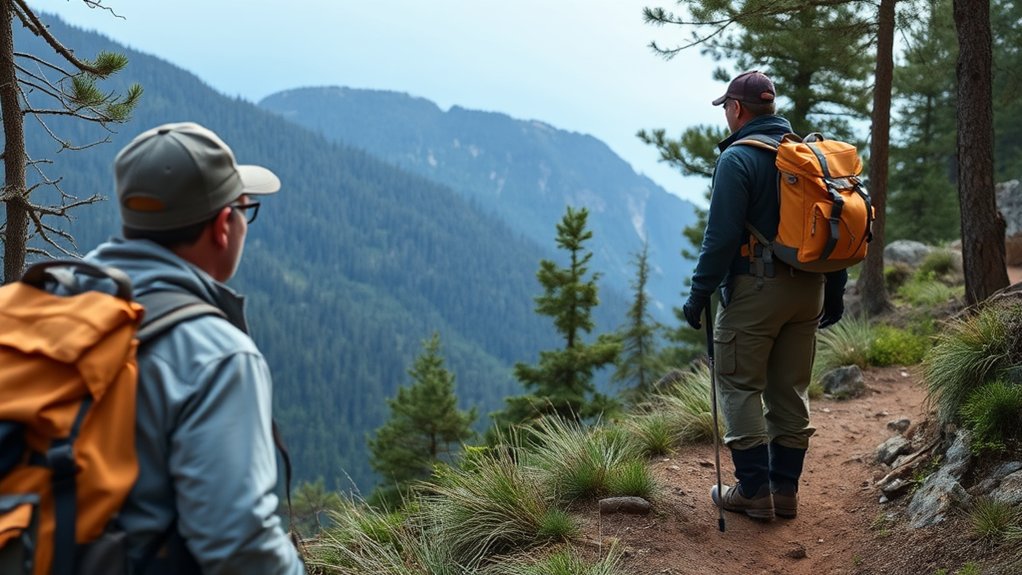
Even experienced hikers face unexpected wildlife encounters and natural hazards on solo treks. Your best defense is thorough preparation and knowledge of local wildlife behavior.
Before heading out, research the animals you might encounter and learn their warning signs, tracks, and typical reactions to humans.
When you're on the trail, make your presence known by using bear bells or singing – this prevents startling wildlife. Keep your distance and never approach animals, even for photos.
If you encounter large wildlife, don't run. Instead, back away slowly while making yourself appear large and maintaining eye contact. Carry bear spray and know how to use it effectively.
Climate change has intensified natural hazards on trails. You'll need to watch for unstable terrain, especially after heavy rains or temperature fluctuations.
Be particularly cautious of rockfall in areas with retreating glaciers and sudden weather changes that can trigger landslides. Check weather forecasts religiously and don't hesitate to turn back if conditions deteriorate.
Pack emergency gear, including a first aid kit, and always stay on marked trails to minimize your exposure to geological hazards.
Building Mental and Physical Preparedness
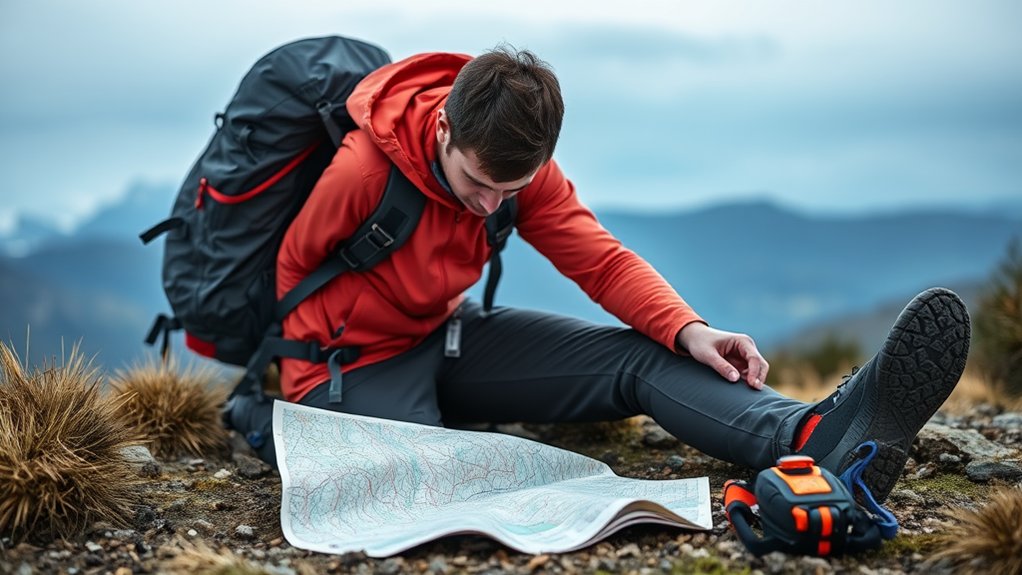
While wildlife encounters demand specific precautions, successful solo hiking starts with strong mental and physical foundations. You'll need to build both your confidence and stamina systematically before tackling challenging trails alone.
Start by choosing trails that match your current abilities, and gradually increase difficulty as you gain experience. Join group hikes initially to develop essential skills and trail awareness before venturing solo.
You'll learn valuable techniques from experienced hikers while building your confidence in a supported environment.
Master your gear before heading out alone. Practice using your navigation tools, setting up emergency shelter, and handling first-aid situations. You don't want to figure these out during an actual emergency.
Trust your instincts on the trail – if something feels off, don't hesitate to turn back.
Stay mentally sharp by avoiding distractions like headphones, and maintain awareness of your surroundings. Project confidence as you hike, even if you're feeling uncertain.
Remember to pace yourself, take breaks when needed, and stay connected with reliable communication devices. Your physical and mental preparedness will determine your ability to handle unexpected situations confidently.
Conclusion
You're joining a growing movement – solo hiking increased 35% between 2019 and 2022, showing more people are discovering the confidence and peace found in hitting the trails alone. By following these safety guidelines, packing smart, staying alert, and building your skills gradually, you'll be well-prepared to tackle solo adventures. Remember, smart preparation transforms a potentially risky activity into an empowering journey of self-discovery.

